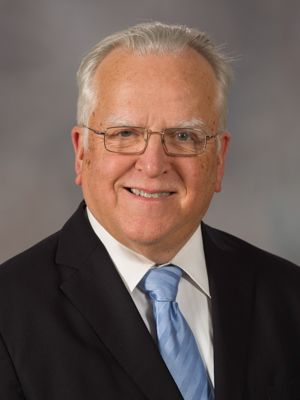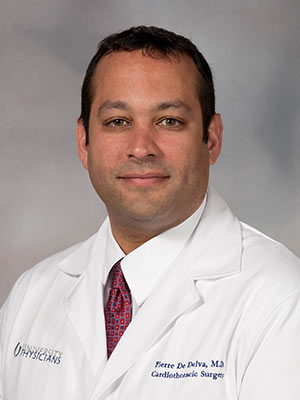ACS: Less tobacco use, more screenings, better treatment fuel cancer rate drop
Note: This story appears in the February 2019 edition of CONSULT, the monthly e-newsletter published by the UMMC Division of Public Affairs that focuses on cutting-edge clinical advances, innovative educational programs and groundbreaking research occurring at UMMC. To receive CONSULT in your email, visit www.umc.edu/CONSULT to sign up.
Cancer survivor Maria Ricketts strongly supports one point in a recent American Cancer Society survey that shows a 27 percent reduction in the cancer death rate in the past 25 years:
Get screened.
The Madison resident said a routine mammogram detected a lump and further testing determined it was cancer.
Today, she calls screening “the most important way to be able to have a positive outcome.

“From personal experience, I can tell you it’s the most important thing,” she said. “If you don’t think it’s needed, just do it to be on the safe side.”
University of Mississippi Medical Center physicians who work with cancer patients like the news that cancer mortality rates have declined at about 1.5 percent per year for the past 25 years, but they say there’s more work to do.
The ACS recently released its cancer statistics for 2019. They indicate while death rates from cancer are declining, those in Mississippi are still higher than national averages.

“There is a clear relationship between rural location, poverty and cancer mortality in Mississippi that we are committed to addressing, so it is not surprising that we have higher rates of cancer deaths here,” said Dr. John Ruckdeschel, UMMC Cancer Institute director and a medical oncologist in the Interdisciplinary Thoracic Program.
The U.S. Centers for Disease Control, which provides the official U.S. records on mortality, shows that in 2015, the latest year for which verified figures are available, Mississippi had a cancer mortality rate of 188.3, while the U.S. average was 159. The rates are the number of deaths per 100,000 population.
The ACS attributes the drop in cancer mortality to three factors:
• A decrease in smoking,
• Better and earlier cancer detection (screening) and
• Better treatment options.
The ACS report shows the most common cancers diagnosed in men – prostate, lung and colorectal – and in women – breast, colorectal and lung – remain unchanged. The cancers account for the largest number of cancer deaths, with lung cancer leading the way.
The ACS report shows one-fourth of all cancer deaths are due to lung cancer. Tobacco use also is a risk factor in about 30 other cancers. While lung cancers are declining, reflecting that fewer people are using tobacco, concerns remain.

“Lung cancer is the number one cause of cancer death and that mortality rate is due to smoking and the fact that most lung cancers are discovered in an advanced stage,” said Dr. Pierre de Delva, an associate professor of cardiothoracic surgery at UMMC who leads the UMMC Cancer Institute’s Thoracic Program. Most lung cancers have no symptoms until they are metastatic.
Along with his fellow Thoracic Program members, de Delva places a high priority on reducing smoking rates and increasing screening to reduce lung cancer and deaths from the disease.
The team is tackling the issue from multiple angles.

Dr. Thomas Payne, director of the ACT Center for Tobacco Treatment, Education and Research, and members of the Thoracic Program worked together to bring smoking cessation counselors into the clinic, where doctors often found patients or their relatives with cigarette packs in their belongings. Payne and company are also working to identify heavy smokers in the ACT Center who may qualify for lung cancer screening.
“ACT Center personnel are working to assure tobacco cessation services are routinely delivered to patients seen in the cancer institute, and those scheduled for an LDCT (low-dose computed tomography) screen,” Payne said.
ACT Center staff continue to see community patients and are working on a program to identify smokers admitted to the hospital, offer smoking cessation services and follow up on an outpatient basis. Cancer doctors are hoping that bringing a smoking cessation counselor to the clinic will increase the number of patients who quit using tobacco.
“While the ACT Center is just steps away from the clinic, having patients show up for later appointments is frustrating,” Ruckdeschel said. “Now we routinely have their smoking cessation staff come over to the clinic and our lung screening staff go over there when someone qualifies for screening.”
Screening with LDCT scans can detect lung cancer before symptoms appear. The UMMC program has been named a Screening Center of Excellence by the Lung Cancer Alliance.
“LDCT in high-risk populations has been demonstrated to identify lung cancers earlier and reduce mortality by 20 percent,” de Delva said, a reduction that is as significant or more significant then mortality reductions in breast and colorectal cancer screening.
“Lung cancer screening has the potential to have the most profound effect on cancer mortality that we have seen in decades,” he said. “Unfortunately, less than 10 percent of eligible patients are screened.”
Results of the cancer institute’s lung screening program are clear, de Delva said.
“It’s led to more cancers diagnosed in early stages.”
He said he’d like to expand that number.
“We need a statewide approach to increase the use of lung cancer screening for Mississippi to fully realize the gains in cancer mortality noted in the rest of the country.”
UMMC Cancer Institute providers urge residents to discuss screening with their medical providers and to be screened at the appropriate time.
Contact numbers include:
• Lung cancer: (601) 984-5864 (LUNG)
• Breast cancer: (601) 815-4723
• Colorectal cancer: (601) 984-4540, option 2
• Skin cancer: (601) 815-3374
• Cervical cancer: (601) 984-5300
• Help with quitting smoking: (601) 815-1180
To find out more about screening, visit https://www.umc.edu/Healthcare/Cancer/Cancer_Screening/Cancer%20Screenings.html



